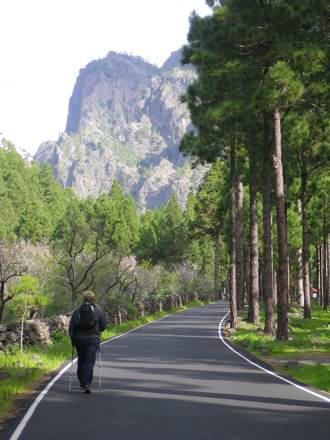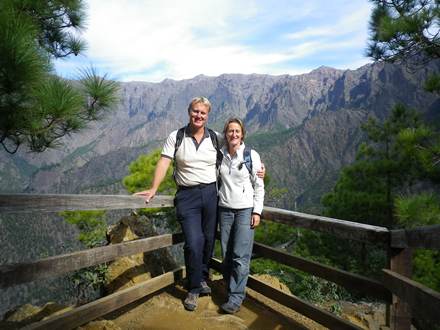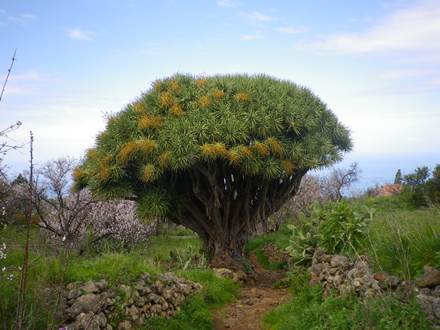La Palma, Tazacorte

Saro's Gyda
Derrick Thorrington
Thu 10 Feb 2011 17:34
The sail around the south of La Palma to Tazacorte was most enjoyable. With the
new found weather forecast, which being local, took into account the height of
the islands, wind shadows and acceleration zones we were able to be much more
confident about the weather conditions. We headed south with full sail on a
lovely broad reach/run, making good speed despite a rather lumpy sea. After
coming away from the land a bit however, this settled into a
comfortable long northerly swell. It was lovely to see this part of the
island from the sea as we had passed by in the dark on our way from El Heirro.
As we headed south the landscape became lower and more obviously volcanic. On
rounding the southernmost tip we could see the bare, black lava flows from the
most recent volcanic eruption in 1971. The wind was very helpful, bending around
the point and leading us into flat seas so that we were heading in a northerly
direction up the west side of the island. Despite this, after about 5 miles with
the odd downgust from the heights, it gradually petered out as predicted,
blocked by the island's volcanic spine. Never mind, all good things have to come
to an end! We motored the last 10 miles enjoying the ever-rising landscape and
the huge terraces of banana plantations, enjoying the more sheltered weather on
this side.
The main attraction of La Palma is the centre of the island, the huge
crater in the north and the ever decreasing ridge running down to the southern
tip. We wanted see the national park of Taburiente situated in and around the
crater. This proved a little difficult as the buses did not run into this area.
Not to be defeated we worked out a route via the buses and had a long and
strenuous walk into the park via a high valley and were able to sample the
interior via numerous miradors (viewpoints) within.

The way in.

Looking back down
the valley

A Mirador in the
Crater

Within the
Crater

D on the way
out.
The best walk (only in my opinion) would be up to and around the
crater continuing down to the south coast via the volcanic ridge. Unfortunately,
parts of this 3 day walk were inaccessible due to snow and ice on the tops. We
have, as usual made good use of the time (and buses) and have had some lovely
walks around the NW coast where the almond trees are in full bloom and "Dragon"
trees (an ancient species dating back to the tertiary period and only to be
found in the Canaries) are still to be found.

Dragon
Tree

We are now waiting for an opportunity to sail for Santa Cruz de
Tenerife, 130 miles away which we hope will be possible in a few days
time.